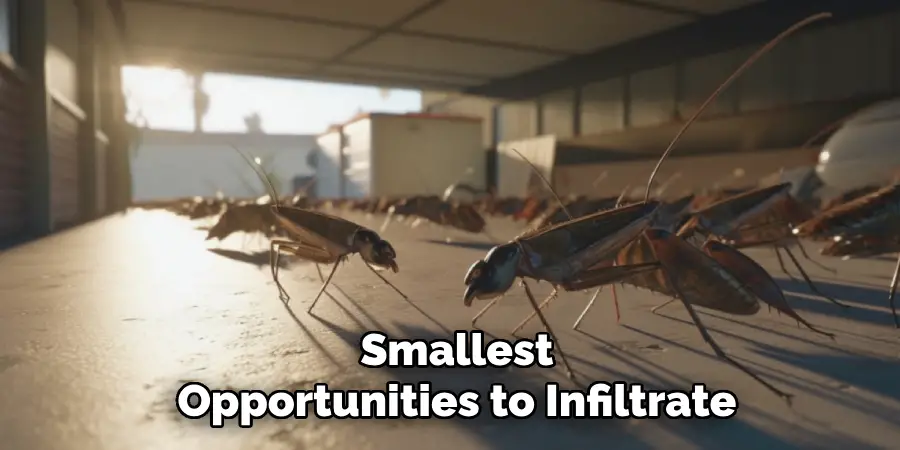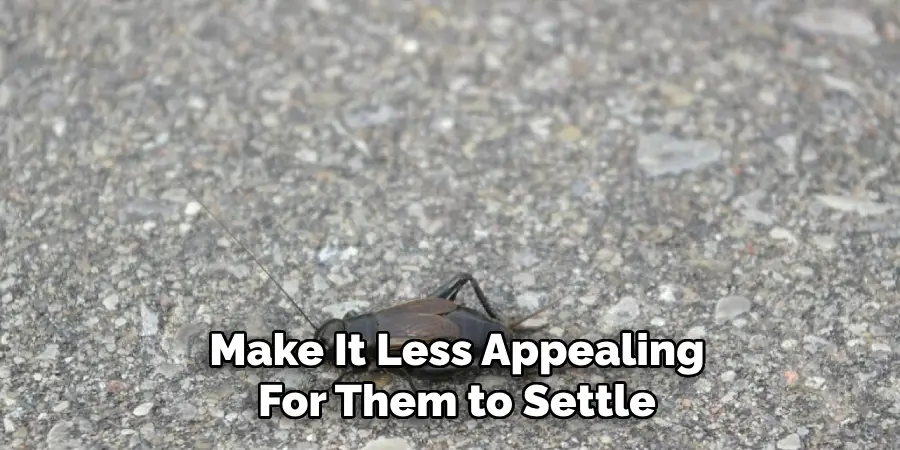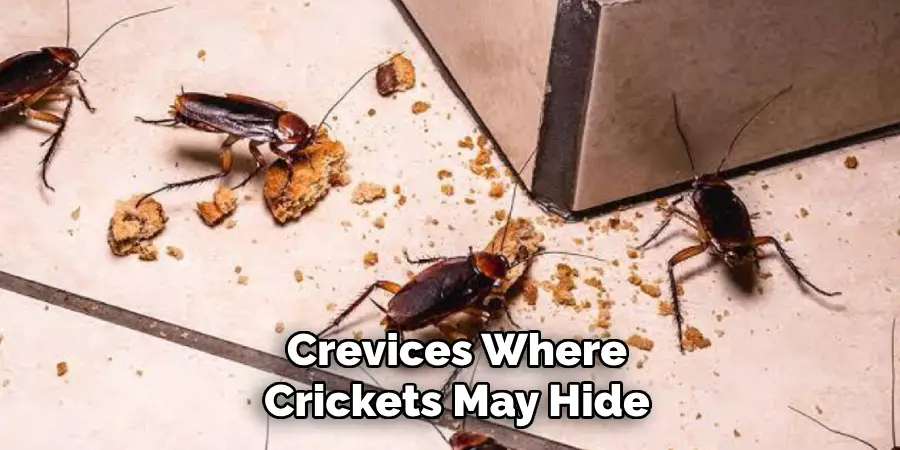Crickets in garages are a common nuisance faced by many homeowners. These small insects are naturally drawn to the garage environment due to its warmth, moisture, and often cluttered spaces that provide shelter.

While their distinct chirping might seem harmless initially, crickets can quickly become a source of frustration. Their incessant noise can disrupt peace, and in some cases, they may cause damage by chewing on fabrics, paper, or cardboard stored in the garage. Additionally, if left unchecked, crickets can multiply and lead to the risk of a larger infestation.
This article aims to provide a comprehensive step-by-step guide on how to keep crickets out of garage. Combining natural, physical, and chemical solutions protects your space and maintains a pest-free environment. With the right measures, you can tackle cricket intrusions effectively and prevent them from returning.
Why Crickets Enter Garages
Attracted by Environment
Crickets are naturally drawn to warm and moist environments, especially during cooler months when outdoor conditions become less hospitable. Garages often provide an ideal climate for them to thrive, as these spaces can retain heat and moisture, creating a refuge from harsher weather. Additionally, cluttered areas within garages, such as piles of boxes or tools, offer plenty of shelter and hiding spots for crickets to nest and stay protected from predators.
Access Points
Crickets can easily make their way into garages through various small openings. Gaps under doors, cracks in walls, and open vents serve as perfect entry points for these pests. Poorly sealed doors or broken weather stripping further increase the chances of crickets invading, as they capitalize on even the smallest opportunities to infiltrate.

Food Sources
Another reason crickets are attracted to garages is the availability of food. Organic debris, such as fallen leaves or dirt brought in on shoes, can serve as a food source for these insects. Stored pet food, cardboard, or even trash left around the garage can also appeal to crickets, encouraging them to stick around and multiply if these supplies are not appropriately managed.
How to Keep Crickets Out of Garage: Seal Entry Points
Preventing crickets from invading your garage starts with effectively sealing all potential entry points. Ensuring that these pests cannot easily access your space is essential in maintaining a cricket-free environment.
Inspecting the Garage
Begin by thoroughly inspecting your garage for any gaps or openings that could serve as entryways for crickets. Pay close attention to the edges around doors, windows, and especially the garage door threshold, as these areas are common for pest infiltration. Additionally, check utility entry points—such as where pipes, vents, or wires enter the garage—for gaps that may have formed over time. Small, seemingly insignificant foundation cracks can also give crickets easy access.
Sealing Methods
To seal your garage effectively, implement weatherstripping along the edges of your doors and add door sweeps to the bottoms, creating a tight barrier that pests cannot bypass. For windows, consider using caulk to seal any gaps around frames; expanding foam can be used for larger cracks or openings. Address utility entry points with caulk or foam, ensuring no space is left unsealed. Lastly, install fine mesh screens over vents and floor drains to allow necessary airflow while preventing crickets from crawling inside. Taking these steps to seal entry points is a proactive way to protect your garage from cricket invasions and reduce the risk of future infestations.
Reduce Attractants Inside the Garage
Declutter the Garage
Crickets are naturally drawn to dark and cluttered environments where they can hide and thrive. To minimize their hiding places, remove any unnecessary items such as cardboard boxes, unused tools, or piles of newspapers. Organizing your garage and keeping it clean and tidy will reduce suitable habitats for crickets and make it less appealing for them to settle.

Reduce Moisture
Moist environments are a magnet for crickets. Use a dehumidifier to lower humidity levels in the garage or enhance ventilation by installing vents or fans. Address any leaks from pipes, roofs, or windows to eliminate moisture sources. Keeping the area dry and well-ventilated will discourage crickets from congregating and reproducing in your garage.
Store Food Properly
Crickets can be drawn to food sources such as pet food, grains, or other organic materials. Store all food in tightly sealed metal or thick plastic containers to prevent access. Avoid leaving loose food around, and make it a habit to dispose of trash regularly. Keeping food properly stored and maintaining cleanliness will help deter crickets and other pests from invading your garage.
Natural Deterrents and Repellents
Diatomaceous Earth
Diatomaceous earth is a natural, safe, and effective way to combat crickets in your garage. This fine powder damages insects’ exoskeletons, causing them to dehydrate and die. Sprinkle diatomaceous earth around baseboards, along the edges of walls, and around the perimeter of your garage. Be sure to use food-grade diatomaceous earth and reapply it periodically, especially after cleaning or if moisture is present.
Essential Oils
Essential oils like peppermint, clove, or cedar are excellent natural repellents for crickets. Mix a few drops of your chosen essential oil with water in a spray bottle and apply it to areas where crickets are likely to enter or hide, such as doorways, corners, and cracks. The strong scent of these oils deters crickets effectively while leaving a pleasant aroma in your garage. Reapply regularly to maintain potency.
Homemade Traps
Creating homemade traps is a simple and cost-effective way to manage cricket infestations. Sticky traps can capture crickets when placed near areas of activity. Alternatively, try filling shallow containers with a mixture of water and molasses. The sweetness of the molasses attracts crickets, causing them to fall into the container and become trapped. Dispose of the traps as necessary to keep your garage cricket-free.

Chemical Treatments
Insecticide Sprays
Using insecticide sprays can be an effective method to combat cricket infestations. Focus on applying the spray around entry points, such as door frames and window sills, as well as in corners, cracks, and crevices where crickets may hide. When selecting a product, ensure it is labeled for indoor use and safe for household environments to avoid harmful effects. Always follow the manufacturer’s instructions regarding application to maximize safety and efficiency. Reapply as recommended to maintain coverage and prevent reinfestation.
Bait Stations
Cricket bait stations are another useful tool in controlling cricket populations. These bait stations contain attractants that lure crickets, which consume the bait and are eliminated. Place the stations in dark, undisturbed corners, such as under furniture or along baseboards, where crickets are likely to travel. Regularly monitor and replace old bait stations to ensure their effectiveness over time.
When to Call a Professional
While many chemical treatments can help manage a cricket infestation, severe or persistent infestations may require the expertise of a pest control professional. If the infestation has spread significantly or if self-applied treatments are not yielding results, consult a pest control service. They can offer targeted solutions and ensure your home is free from crickets.
Ongoing Maintenance and Monitoring
Proper ongoing maintenance and regular monitoring are critical for ensuring that your home remains cricket-free. By staying vigilant and addressing potential issues promptly, you can prevent re-infestations and maintain a comfortable living space.
Regular Inspections
Conduct monthly home inspections to identify any new entry points or signs of cricket activity. Closely to windows, doors, baseboards, and other potential entry zones. Seal any cracks or gaps to reduce access for crickets and other pests. Early detection and intervention are key to stopping a potential infestation before it spreads.
Keep Garage Clean and Dry
The garage is a common area for crickets to hide, especially if it is cluttered or damp. Keep the space clean and organized, removing unnecessary items that could serve as hiding spots. Use dehumidifiers or fans to control moisture levels, as crickets are drawn to humid environments. Ensuring a clean and dry garage will discourage crickets from settling in.
Replace Traps and Reapply Repellents
Regularly replace traps and refresh natural deterrents or chemical repellents to maintain long-term prevention. Over time, traps and repellents may lose their effectiveness, so monitoring and updating these measures are essential. You can keep crickets at bay and enjoy a pest-free home with consistent effort.

Conclusion
Crickets often invade garages for warmth, moisture, and shelter, but you can stop them in their tracks with the right strategies. Sealing entry points, reducing attractants, and applying effective deterrents are key steps in how to keep crickets out of garage spaces. Regular maintenance is crucial, as traps and repellents may lose effectiveness over time. Combining natural methods like essential oils and chemical solutions can provide the best results. By staying proactive and consistent, you can enjoy a clean and pest-free garage all year round.
I am Rick. I grew up helping my dad with his handyman service. I learned a lot from him about how to fix things, and also about how to work hard and take care of business. These days, I’m still into fixing things- only now, I’m doing it for a living.
I’m always looking for new ways to help people grow and develop. That’s why I have created this blog to share all my experience and knowledge so
that I can help people who are interested in DIY repair.

